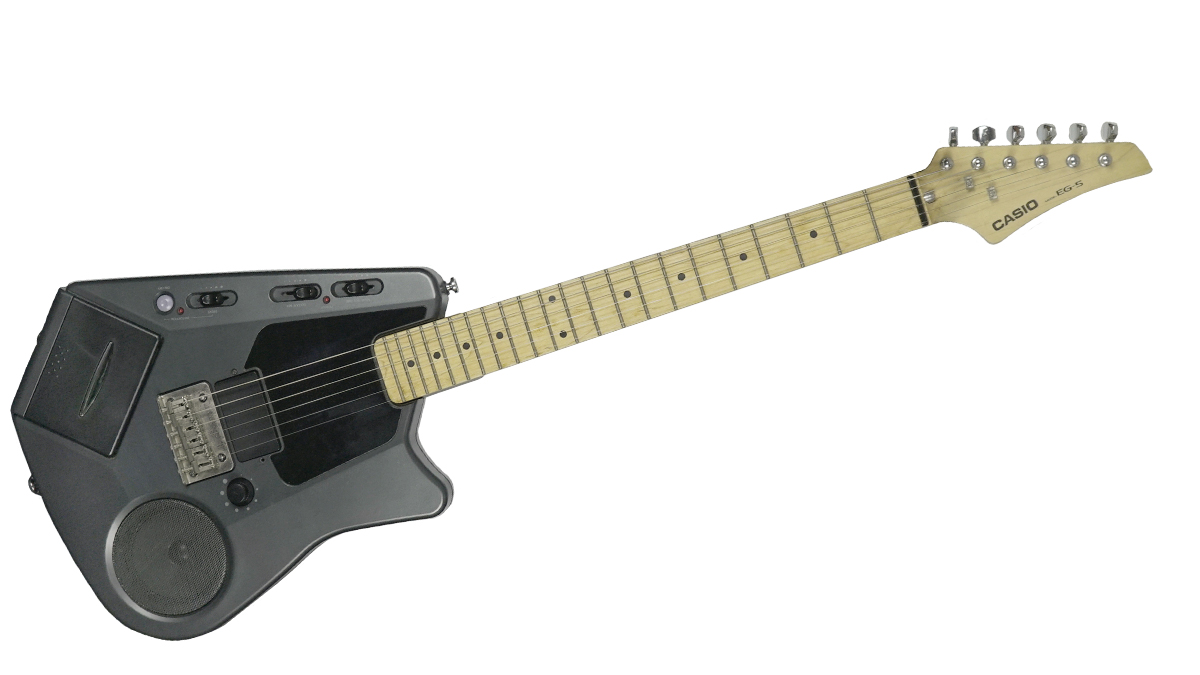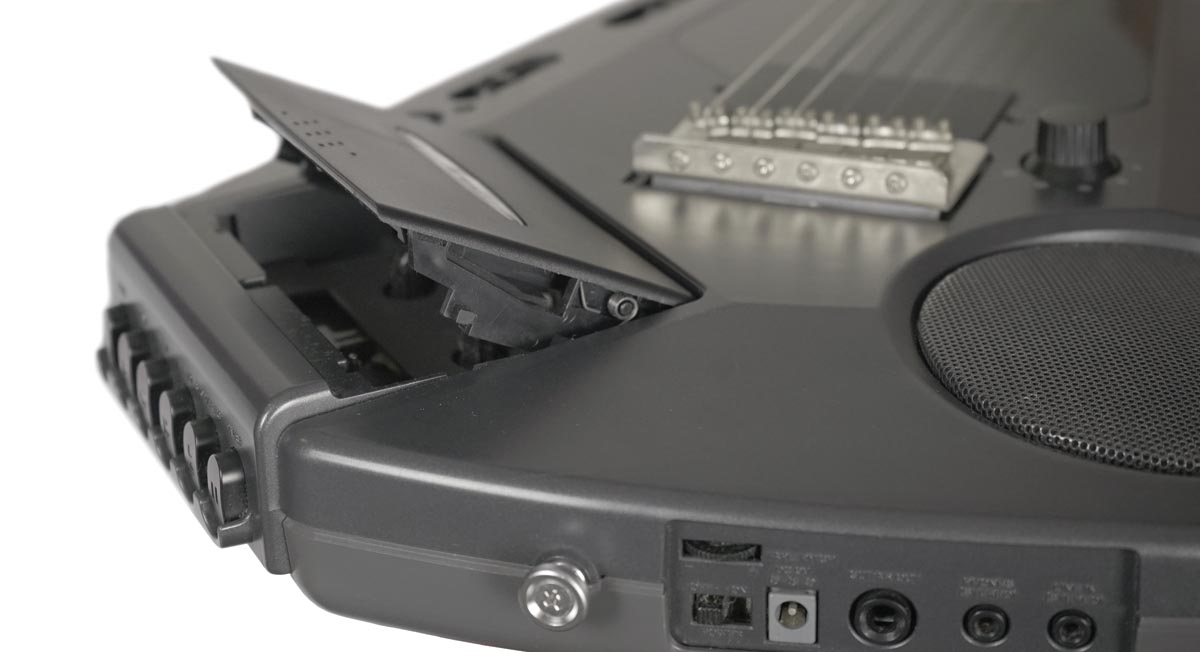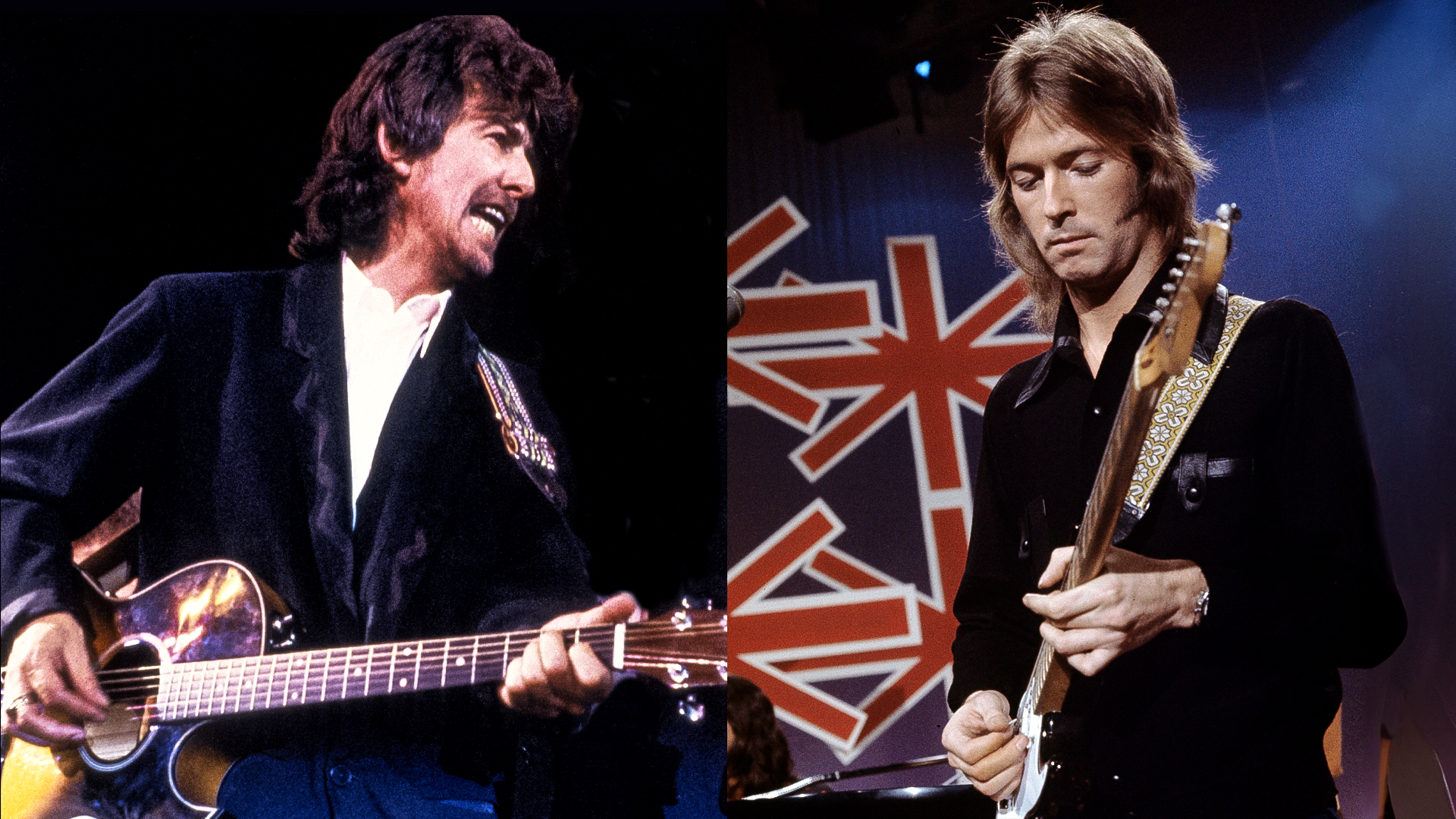The Plug In and Play Performance of the Casio EG-5 Cassette Guitar Was Pure 1980s Weirdness
With its built-in cassette recorder, Casio developed a bona fide six-string karaoke machine.

Back in the 1980s, perhaps nobody understood better than Casio that electronics were getting smaller and smaller by the year. The Japanese company knew a thing or two about stuffing sophisticated circuits into small places, which may be why it made some of the most forward-thinking and feature-laden electric guitars of the era.
Consider Casio’s late-1980s MG-500 MIDI Guitar, which is still considered one of the best of its kind.
But in the early 1980s, before it delved into digital sampling, MIDI instruments, and synth guitars with built-in drum machines and so on, Casio devised the EG-5, a futuristic-looking plastic-bodied electric guitar made remarkable by having a stereo cassette recorder with an onboard amplifier and speaker built right into it.
Weirdo Factor
Don’t be put off by the angular plastic body — the EG-5 actually plays quite well. Yes, the shape is a bit weird, but the only truly odd thing is the inclusion of a stereo recording studio, amp and speaker.

Playability & Sound
As electric guitars go, the EG-5 is pretty basic, offering one pickup, one volume control, a set bridge, and a friendly Ibanez-made, one-piece, C-shaped 22-fret maple neck. But thanks to its built-in cassette recorder, this contraption rules as a practice or street-performance tool.
In addition to jamming along with a tape, you can tap music from another source through the stereo input and play to it, all while recording the entire performance and monitoring it through the onboard speaker or headphone jack, which doubles as a stereo output.
The tape player includes a pitch control, and the whole thing runs on six AA batteries or a nine-volt wall wart. Casio even included every ’80s guitarist’s favorite effect — distortion, and a very usable one at that.
All the latest guitar news, interviews, lessons, reviews, deals and more, direct to your inbox!
The guitar’s control set includes a push button for the OD circuit and three sliders to set the distortion level, the balance between the guitar and tape levels, and the master volume output.
Value
Originally retailing at around $300, these guitars weren’t cheap at the time, but they’re fairly affordable by today’s prices, selling for between $400 and $1,000.
Why It Rules
With its attention-getting looks, the Casio tempts you to take it onstage, but it’s undoubtedly better left on the tour bus, for when inspiration strikes you during those long hours between gas stops. Some 35 years since it left the factory, mine still works perfectly, a testament to how well it was engineered and built.
Interestingly, some folks have opened up their EG-5s and performed creative circuit bending that allows for looping and discrete control over inputs and outputs, making these 1980s axes even more versatile today.
